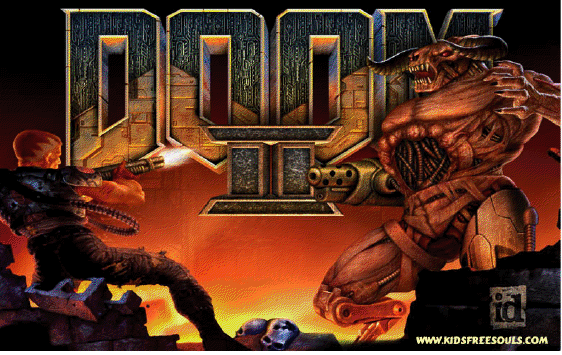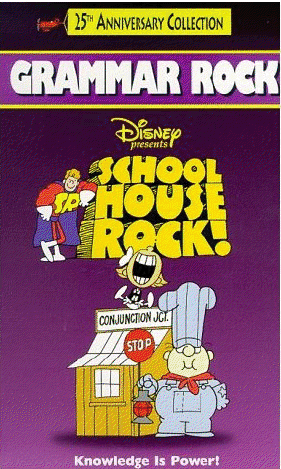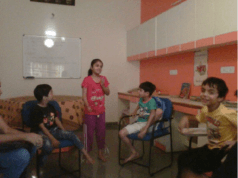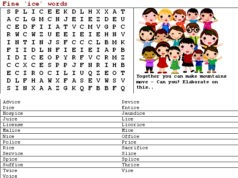
“Children get addicted to games. Games make them go wild and they aren’t good for kids.” Say many parents. Computer motivates skills like thinking, strategizing, computing, and much more. If you really believe that, you might be closing your child to a world that teaches him many skills.. Games are a surefire way to get your child interested in computers.
With fascinating multimedia, puzzles to solve, Grammar skills, aliens to kill, different levels to cross, and ultimately win, games have the power to teach the child in many different ways. Unfortunately they also have the mesmerizing power to keep him glued to the computer. To top it all, most games only seem to have a lot of violence. But all games aren’t like that. So how do you figure out which game is fine for your child, and which isn’t? Will it help your child, or will it bore him to distraction? Remember that games are not all bad. And not all have graphic violence in them. You just have to be aware of what’s there and spend some time checking them out before you let your kids loose on them. Also monitor the amount of playing they do on the PC, and assess how much they learn from a game. Keep these simple things in mind, and you won’t go wrong with games for your kids. Before you go out and spend all that money on games, here are some Kids Freesoul tips to help you choose a game that will end up as some fun learning for kids.

Taste of the child
Analyse the interests of the child. Does he like to a lot of action, or does he like to solve puzzles? Does he like to figure out things, does he like to interact with others, have lots of friends? And so on. Identify what his interests are and then get him games that cater to that.
Keep the age in mind
You’ll find lots of educational games for your child-math, spellings, creativity, fun games, puzzles and so on. But these are age-specific and don’t usually cater the entire age range mentioned on the cover. Games like Car racing are not easy for younger kids, Doom or Quake too are meant for mature adventure loving lot whereas Tomb Raider, Nomad Soul and Shadow Man are like stepping in the shoes of an action packed thrill. Some games require cool great controls – Game pads, game wheels and joysticks which gives cool gaming experience.
The repaying value
If you’re going to spend quite a sum on a game only to find out that your kids play it just a couple of times, that will definitely turn out to be a waste. All games should have enough content and difficulty levels to keep your child engaged for a longer time. Moreover, many games are easier if cheat codes are available. If a CD rom like Grammar Rock is bought for kids between 6-10, than it sure is a good choice as its just cool prized too.
Look at the category
Not all games are action or shoot-’em-ups. There are puzzle-based games, role playing games, strategy and adventure games, sports, racing, simulations, Grammar, educational and many more. And then there are games which are a mixture of some of these. For instance there are action adventure games, strategy-action games, and so on. Look at the box cover of the game-it will tell you what category it fits into.
Don’t say no to action
Yes, there are a lot of games out there that show killings in graphic detail. And it’s very easy for your child to get hooked on to them. But it’s not violence that a child is getting hooked on here-it’s the sense of being in control, say PC Dads, Mark Ivey and Ralph Bond. Give him a game that will give him as much control, and you have a child who’s using his thinking skills as he gets exhilarated through the clean gameplay. There are enough games that are not ultra violent but can be as addictive and enjoyable as a session of Doom or Carma II. For instance, the Need For Speed series is a popular racing games. You get to choose the cars, configure them, and then blaze down the race tracks to the tune of some wild cheering and catchy beats. Games like Nomad Soul is a stunning adventure set in a parallel universe that will have no looking back.
Check the ratings
Look on the box again to check the ratings. Most games follow what is called the ESRB (Entertainment Software Rating Board) rating. The board rates games by the age group it is meant for-Early Childhood (EC), Kids to Adults (K-A), Everyone (E), Teen (T), Mature (M) and Adults Only (AO). If the box doesn’t mention it, you’ll have look for game reviews in magazines and on the Net.
Do your homework
Your child will come up with a request to buy a game. Before you give the nod, ask around. Your friends or neighbors may know about it and what they have experienced because of that game being played at home-incessant bloodshed, wild whoops, deafening noise, addiction, boredom, or anything else. Look for magazine reviews on the game-they warn you about the violence and sexual content in the game. You can also look for reviews online. Some sites are: www.pcgame.com, www.gamesdomain.com, A lot of magazines pack game demos on their CDs. You could install them on your PC, and see if it’s suitable for your kid. Once you have made sure what the game is all about, you can go ahead with the purchase. You will also find many online websites with Game Reviews and plays which will help you make your choice.
Check MB Space in your PC
A lot of parents realizes too late the game that they have just bought for their kids doesn’t run on their PC after all. New games need a lot of power as they use full-motion videos, astounding graphics and astounding sound. Some need graphics accelerator cards and the latest processors. More MB space is required in the computer. Read the Minimum requirements that are mentioned on the game box. A PC usually will need much more than that to handle the game well.
Play with the kids
Yes, go on, try it. The kids will love it, especially when they beat you hands down. And you’ll learn a thing or two about games and computers. And above all, you’ll be sure of what your child is playing. You can even have discussions based on the games-how something could have been done better, what ancient civilizations were like, and so on.
Set Rules
Once you choose a game for kids or yourself, set the rules. Any kind of addiction is no good at all. Fix up the time schedules for play strictly. Also understand the amount of violence that will be tolerated. For instance, some bit of shooting is fine, but gore in graphic details is a strict no-no. And accept demands for only those games that will offer more than violence. Games like educational grammar fun, creativity but be specific that playing doesn’t mean only on the computer-children have to spend some time at the playground too. Also watch out for instances when your child may be sneaking off to his friend’s place to play violent games. Take precautionary steps to make him understand the rules you have set.
GIRL STUFF
Most of the games cater to boys.Girls prefer creative games to destructive ones. Most girls express a distaste for mindless shoot-em-ups. US game makers have been releasing games for girsl, but not many have found their way to India. There are Barbie games that let you dress her up, make invitations, choose the recipe for a party. But not all girls of all ages will find that entertaining for too long. Strategy and role playing games such as Civilization, King’s Quest, Titanic, etc are games that have action, adventure, puzzles, fantasy, interaction with characters-all things that girls love. So if you look beyond the seemingly limited face of games, you will find games that will interest girls as well. Of course there die hard girl gamers too-ones that give any seasoned Quaker a run for his gaming money.
Games : Find your Child’s game habits
Dr Mark Griffiths of Nottingham Trent University, an expert on video game addiction says in BBC News:
Does your child:
> play almost every day?
> often play for long periods (over 3-4 hours a time)?
> play for excitement?
> get restless and irritable if they can’t play?
> sacrifice social and sporting activities?
> play instead of doing their homework?
> try to cut down their playing but can’t?
If the answer is “yes” to more than four of these questions, then your child may be playing too much.
So what do you do now?
*Give children educational rather than violent games.
*Encourage video game playing in groups rather than as a solitary activity.
*Set time limits on children’s playing time. Tell them they can play for a couple of hours after they have done their homework – not before.
*Ensure children follow the video game manufacturer’s recommendations. For example, they should sit at least two feet from the screen, play in a well-lit room, never have the screen at maximum brightness, and never play when feeling tired.
Finally, if all else fails, take away the games console and give it back on a part-time basis when appropriate.
Are you a Game Freak? Send us your coolest Game choice, Reviews, what games you love to play outdoor or Indoors or just on Computers. E-mail us







